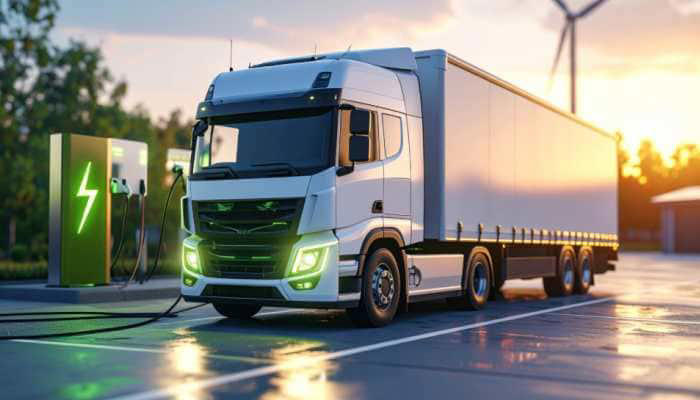India Rolls Out Incentives for E-Trucks Under PM E-DRIVE: A New Era for Green Freight

In a significant move towards promoting sustainable transport and domestic manufacturing, the Ministry of Heavy Industries (MHI) has notified dedicated guidelines for electric trucks under the PM Electric Drive Revolution in Innovative Vehicle Enhancement (PM E-DRIVE) Scheme. The notification, issued on 10 July 2025 (S.O. 3081(E)), outlines comprehensive eligibility criteria, demand incentives, phased manufacturing requirements, and compliance conditions specifically applicable to electric trucks (e-trucks) in the N2 and N3 vehicle categories.
Scope and Applicability
The latest notification applies exclusively to electric trucks (e-trucks) and supplements the broader PM E-DRIVE Scheme earlier notified on 29 September 2024 (S.O. 4259(E)). The scheme is now officially extended to include incentives for:
- N2 Category: Trucks with Gross Vehicle Weight (GVW) exceeding 3.5 tonnes but not exceeding 12 tonnes.
- N3 Category: Trucks with GVW exceeding 12 tonnes but not exceeding 55 tonnes.
Incentives under the N3 category will apply only to the “puller tractor” in the case of articulated vehicles (i.e., tractor-trailer combinations).
Incentive Structure
Incentives will be provided based on the lower of the following three parameters:
- ₹5,000 per kilowatt-hour (kWh) of rated battery capacity.
- 10% of the ex-factory vehicle price (excluding the trailer).
- Maximum incentive based on GVW, as outlined below:
| E-Truck Category | GVW (in tonnes) | Maximum Incentive per Vehicle (₹ lakh) |
| N2 | >3.5 to ≤7.5 | 2.7 |
| N2 | >7.5 to ≤12 | 3.6 |
| N3 | >12 to ≤18.5 | 7.8 |
| N3 | >18.5 to ≤35 | 9.6 |
| N3 | >35 to ≤55 | 9.3 |
Precondition: Mandatory Vehicle Scrappage
To avail the incentive, manufacturers must submit a Certificate of Deposit (scrapping certificate) issued by a Ministry of Road Transport and Highways (MoRTH) authorised Registered Vehicle Scrapping Facility (RVSF). The scrapped vehicle must be an ICE truck of equal or higher GVW. The authenticity and eligibility of the certificate will be verified through integration with the PM E-DRIVE and VAHAN portals.
Performance and Efficiency Criteria
Eligible e-trucks must meet strict performance and efficiency parameters, including:
- Minimum range of 80–100 km (based on GVW).
- Maximum energy consumption thresholds (150–350 kWh/100 km).
- Minimum top speed: 60 km/h.
- Minimum acceleration: 0.5–0.8 m/s².
- Minimum gradeability: 7 degrees.
All vehicles must be fitted with Electric Regenerative Braking Systems, and must comply with AIS 039 energy consumption measurement standards and CMVR norms.
Warranty Mandate
Each e-truck must carry a minimum warranty of:
- Battery: 5 years or 5,00,000 km (whichever is earlier).
- Motor: 5 years or 2,50,000 km.
- Vehicle: 5 years or 2,50,000 km.
Phased Manufacturing Programme (PMP)
In alignment with the Government’s Atmanirbhar Bharat objective, the scheme mandates progressive domestic manufacturing of key components. Key highlights include:
- Effective from 1 September 2025: Domestic manufacturing of HVAC, charging inlet (CCS2), electric compressor, DC-DC converters, vehicle control units, traction battery packs, and more.
- Effective from 1 March 2026: Mandatory domestic production of Battery Management Systems (BMS), integrated traction motors and inverters, and traction motor controllers.
- Imported battery modules and CKD imports from a single supplier for key components are prohibited.
PMP verification will be conducted separately for each component, including in cases of integrated units (e.g., 3-in-1 power electronics).
Funding Allocation and Impact
The scheme aims to support 5,643 e-trucks in FY 2025–26 with a total outlay of ₹500 crore, and a maximum ex-factory price cap of ₹1.25 crore per vehicle to qualify for incentives.
Legal and Policy Framework
The PM E-DRIVE e-truck notification draws its legal foundation from a combination of statutory and regulatory instruments. Vehicle categorization and performance standards are defined under the Central Motor Vehicles Rules, 1989. The mandatory scrapping certificate requirement aligns with the Motor Vehicles Act, 1988 and the Vehicle Scrappage Policy. The term “manufacture” under the Phased Manufacturing Programme (PMP) adopts its meaning from the CGST Act, 2017 to determine domestic value addition. Further, the scheme builds upon the legacy of the FAME India scheme and is funded via budgetary allocations authorised under the Appropriation Acts and governed by the General Financial Rules (GFR), 2017.
Conclusion
The targeted incentivisation of e-trucks under the PM E-DRIVE Scheme marks a decisive push towards decarbonising India’s heavy-duty freight segment. Coupled with the scrappage mandate and strong localisation requirements, the policy is poised to stimulate demand, ensure environmental compliance, and boost indigenous EV component manufacturing.
Manufacturers, fleet operators, and stakeholders in the EV supply chain are encouraged to align with the new guidelines promptly to avail benefits and participate in India’s clean mobility transformation.
For more details, write to us at: contact@indialaw.in
By entering the email address you agree to our Privacy Policy.



